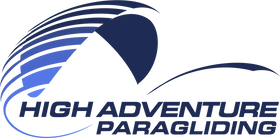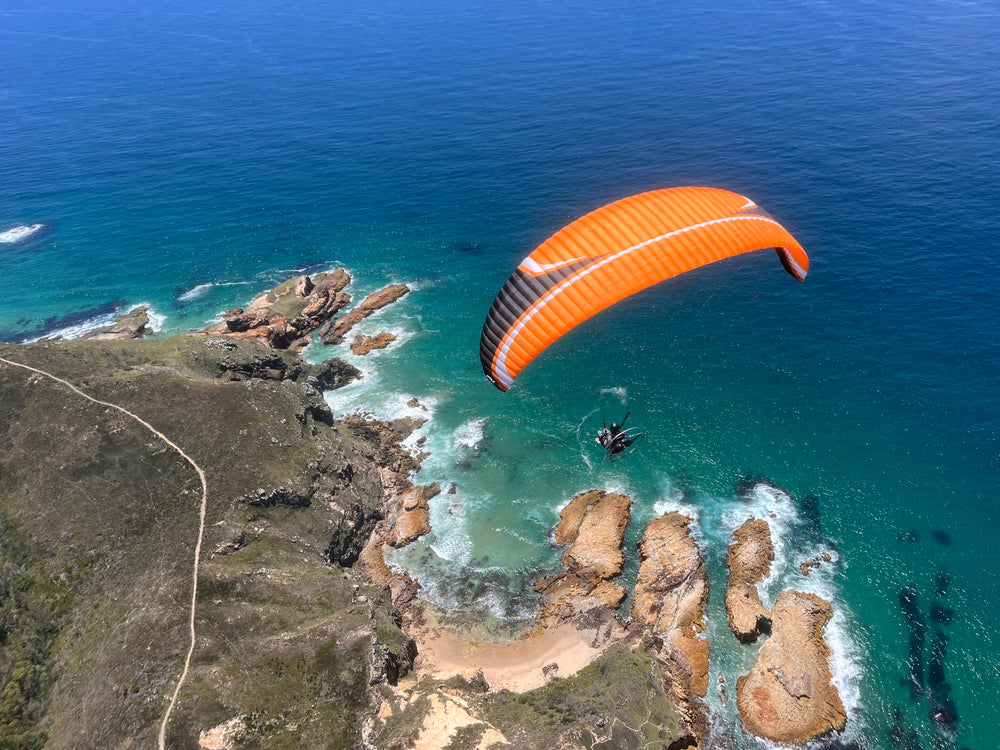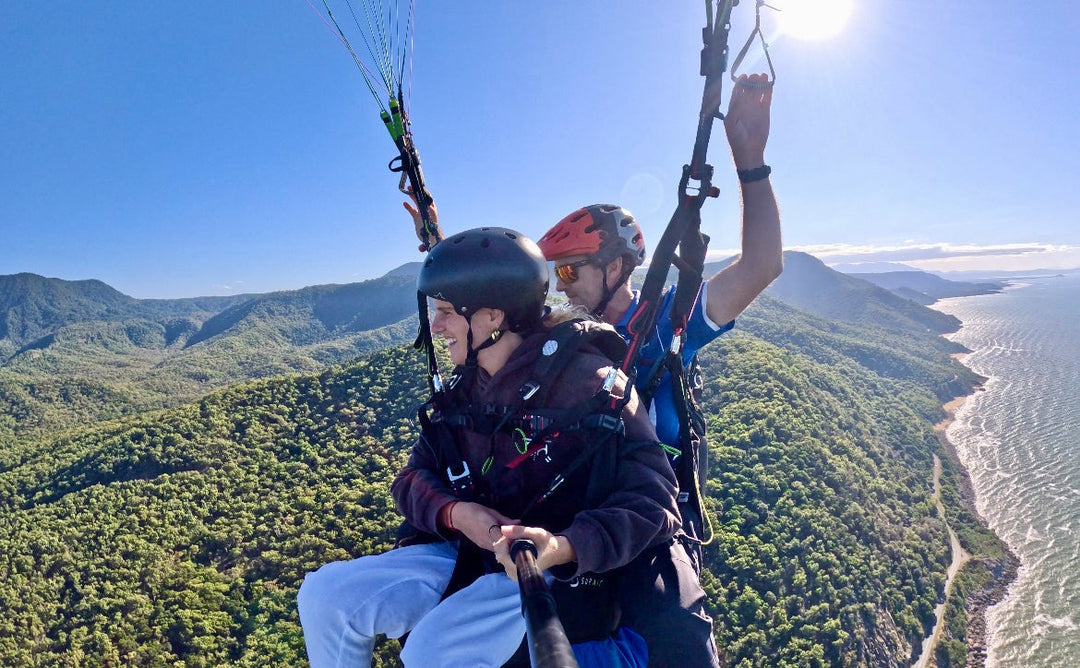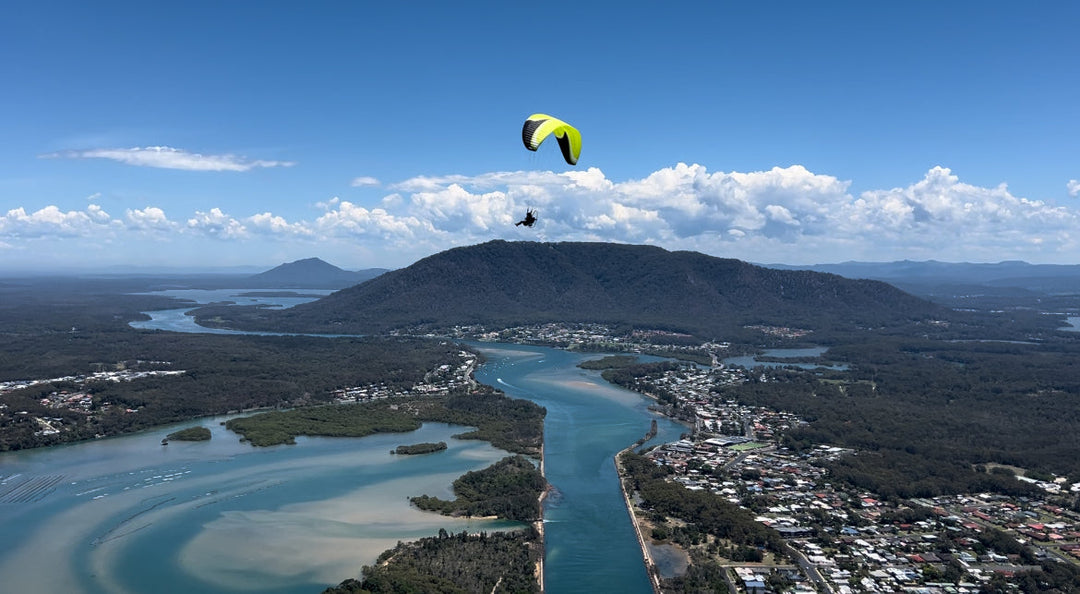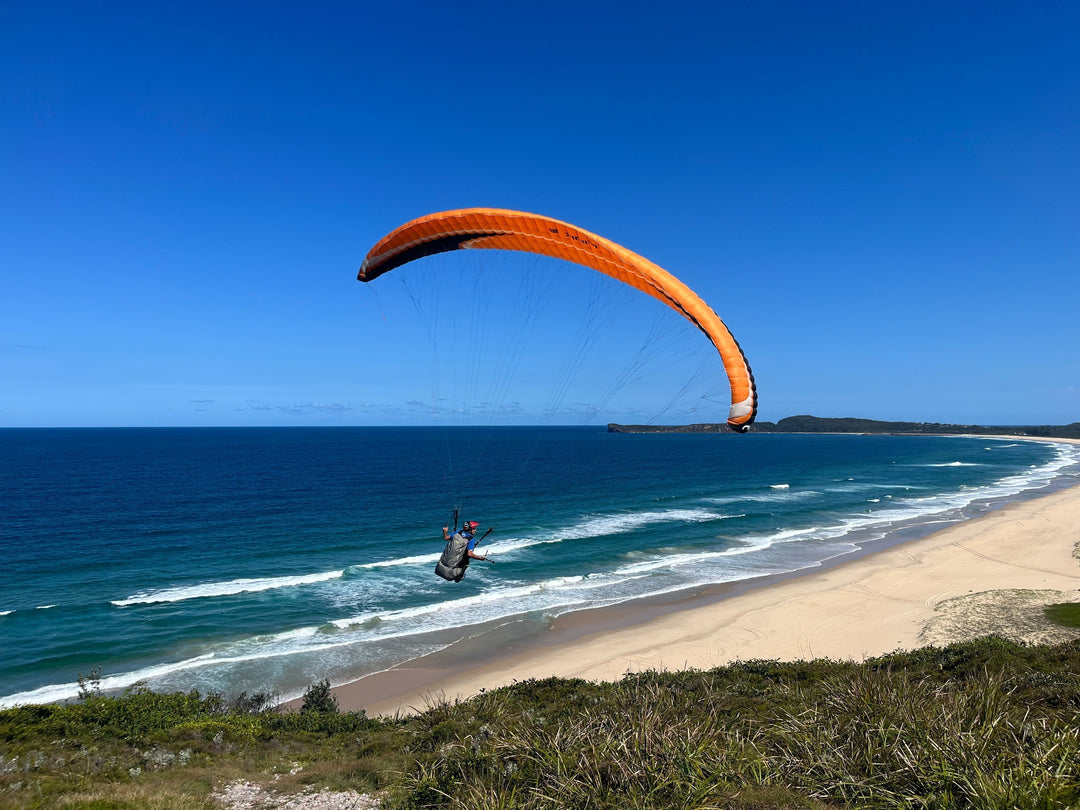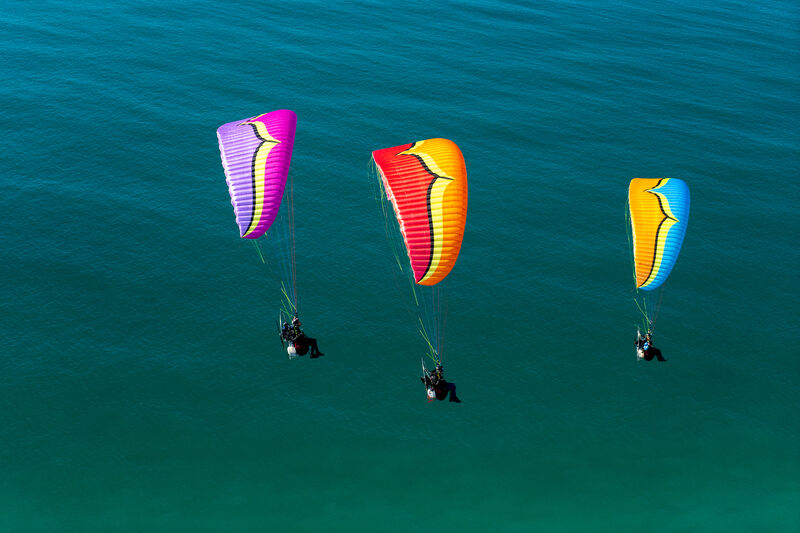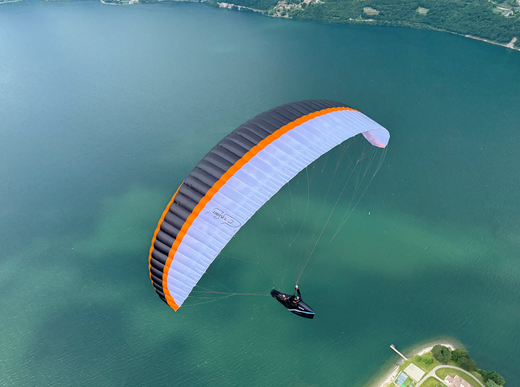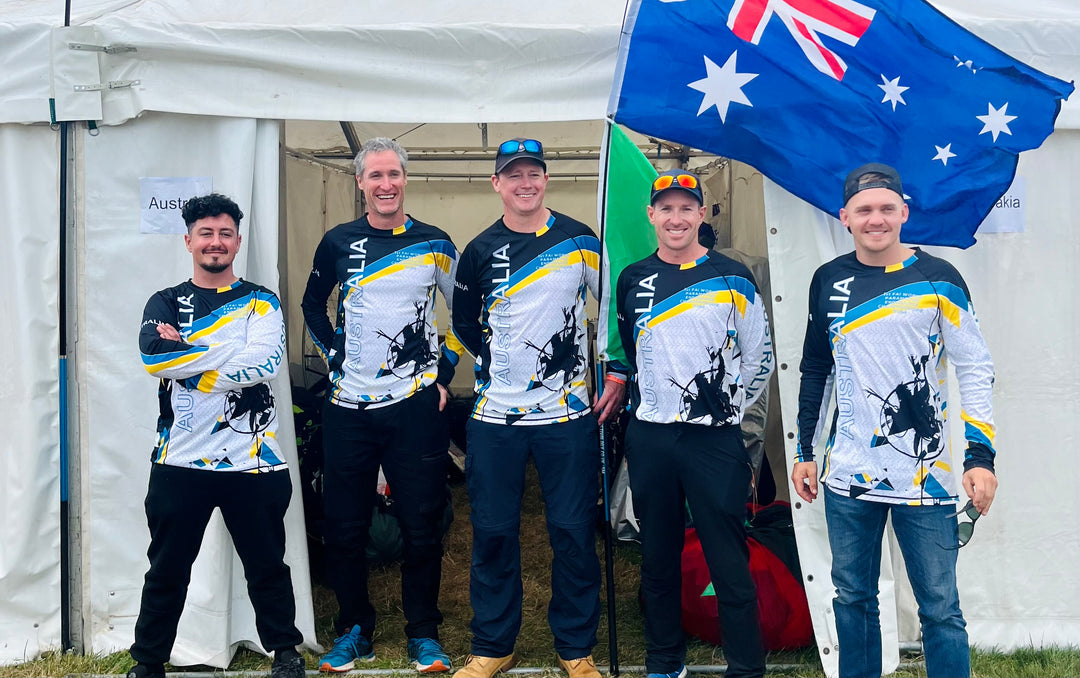1st FAI Paramotor Endurance World Championships 2024
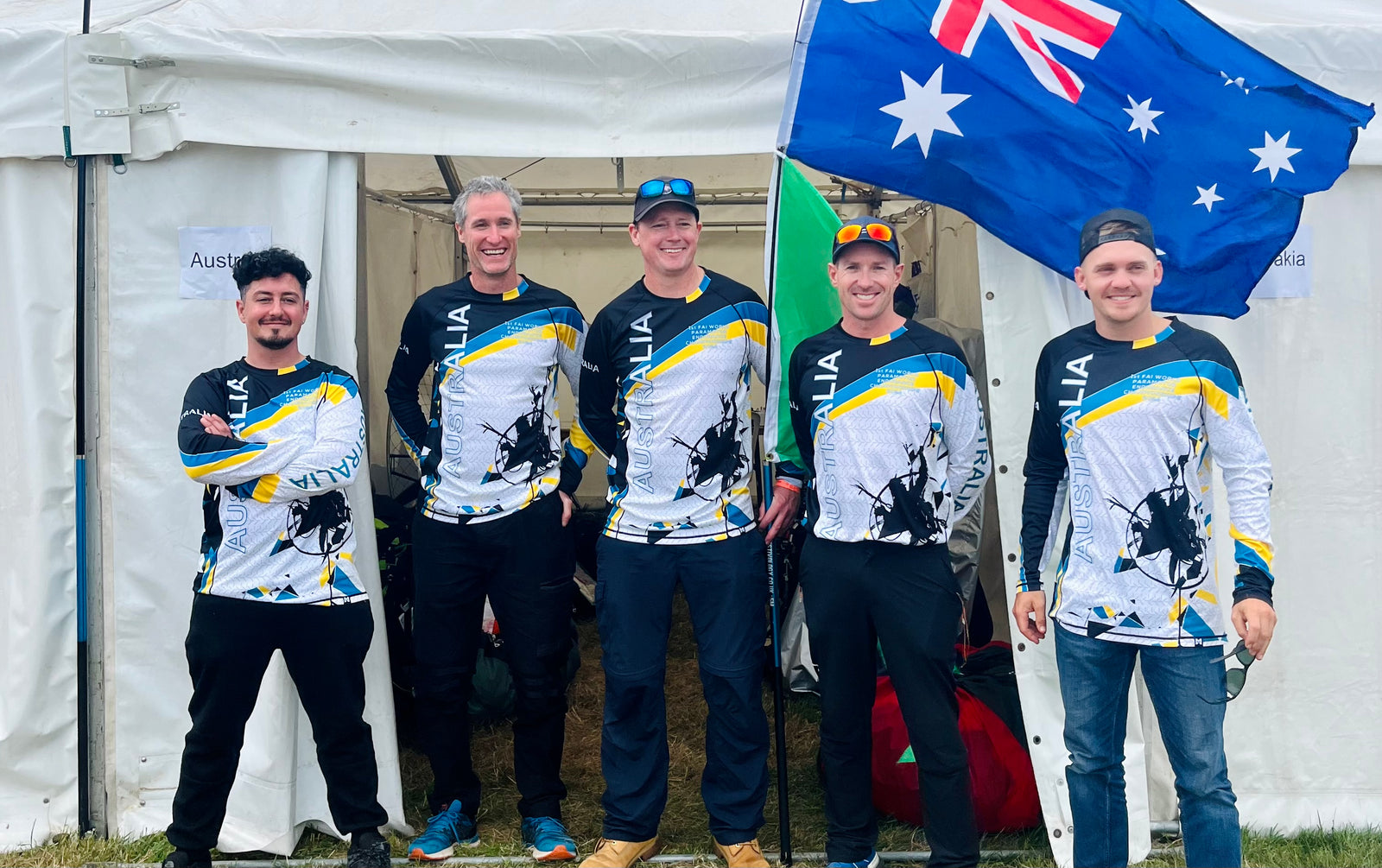
The 1st FAI Paramotor Endurance World Championships took place from 3 - 10 August 2024 at Manston Airport in Kent, England. A total of 53 competitors from 14 countries participated in the PF1 (foot launch) class, while 31 competitors from 11 countries competed in the PL1 (wheelbase) class. Pilots traveled from across Europe, the Middle East, the United States, Japan, India, and Australia.
THE AUSTRALIAN TEAM
The Australian team competed in the PF1 (foot launch) class and consisted of five pilots:- Me (David Wainwright): Australian Captain with over 16 years of experience.
- Ross Cameron: Australian paramotor pilot now based in the UK, with 7 years of experience.
- Dan Eakins: Paramotor pilot from Darwin with 19 years of experience.
- Telfer Thorbjornsen: Fellow Darwin paramotor pilot with 3 years of experience.
- Tony Parkin: Paramotor pilot originally from the UK and now based on the Gold Coast, with 5 years of experience.
For Dan, Telfer and Tony, this was their first competitive paramotor competition.
THE COMPETITION
The competition involved a series of navigational and piloting challenges that could be attempted at any time during the allowed flying hours. Pilots were required to fly cross-country, focusing on strategic flight planning, airborne decision-making, and practical paramotoring skills. Points were awarded for precision, navigation, and economy.
The competition took place over a vast flight area of approximately 4,000 square kilometers in the Kent countryside, with minimal restrictions and no-fly zones.
PREPARATION
Prior to the event, I was excited but felt underprepared. Due to limited training time, I hadn't practiced any navigation. To address this, I arrived in the UK a week before the competition to train in the local area. Unfortunately, unfavorable weather conditions allowed for only one practice day. On that day we participated in a time and distance practice task. Despite struggling with the calculations, I flew well and successfully completed a spot landing task with a bullseye.
DAY 1
The first day of the competition offered favourable flying conditions, with light winds prevailing for most of the day. This allowed for a generous flight window from 7am to 4pm, and the available flying time was set at 5 hours.
All navigational tasks were available for completion, and it was up to each pilot to decide which tasks to tackle and when. Given the favorable winds, I opted to focus on the timed tasks, aiming to maximize accuracy in my estimated flight times. Unfortunately, this plan was derailed when I became lost during the third leg of my second task. After retracing my steps, I continued with the remaining timed tasks, which conveniently ended near the airfield.
With 1 hour and 10 minutes remaining, I decided to attempt a 60km snake task close to the field. However, the winds had picked up slightly, extending the flight time beyond my initial estimate. As a result, I found myself with only 5 minutes to spare upon completing the task. Thankfully, the thermals had calmed down by this point, allowing me to push my glider to its limits and cross the finish line with just 1 minute to spare.
Other members of the team encountered their own challenges on day 1. Tony accidentally tripped over his map board during launch, breaking his propeller and cage. Despite initial fears of being forced to withdraw from the competition, he was able to source the necessary replacement parts later in the week. Telfer dropped his throttle into his propeller resulting in an outlanding at a waste transfer station. Luckily this just killed the engine and didn’t cause the engine to get stuck on full power. Dan faced a more tedious challenge when his GPS tracking device fell into a field several kilometres from the launch area, requiring him to conduct a painstaking search (it was literally in a haystack!).
DAY 2
Day two of the competition was scheduled for a bowling landing task. The wheelbase pilots went first to take advantage of the lighter winds, but by the time they finished, the wind had become too strong for the foot launch pilots. As a result, the bowling landing task was cancelled. Instead we emptied our machines and prepared for a pure economy task that afternoon. We were hopeful that the thermals would be strong enough to keep us airborne for a long time. However, due to unfavourable weather conditions, the economy task was also cancelled.
DAY 3
On day three, we completed the bowling landing task, which involves knocking over ten pins spaced two meters apart. However, the task became more challenging as the wind increased significantly after take-off. Many pilots, including myself, misjudged the landing. I was only able to knock over three pins, which was really disappointing as this is usually one of my strongest tasks.
During this task, Ross experienced a more serious incident. Coming in to land, he was slightly off course and overcontrolled his glider. This caused him to pendulum into the ground and his leg took the impact at an odd angle. He was taken to the hospital and the diagnosis was a fractured tibia and fibula, requiring surgery. This was a significant setback for the team, especially considering Ross's strong start to the competition. It's worth noting that despite only flying for one day, including a perfect score on one task, Ross still managed to place mid-table at the end of the competition.
DAY 6
On day six, after several days of bad weather, we were able to fly another navigation task. The task had a total flight time of 2.5 hours and a flight window between 5am and 10am. With increasing winds throughout the morning, it was important to start early to take advantage of lighter winds on the outward leg and use the wind to return home.
Unfortunately, I encountered a setback when my map board mount broke after takeoff. This forced me to do a circuit, which added three minutes to my time as I had to avoid the no-fly zone. I returned to the deck and obtained spare parts from Tony, who had the same mount. However, I realized that I had drilled the holes differently on my mount, so I had to borrow a drill from the Vittorazi technician.
After making the necessary repairs, I rushed to launch my wing. Having had assistance spreading the wing, I failed to give my glider a thorough pre-flight inspection. I took off with a forward launch and then noticed a tension knot in my right D lines. I was unable to clear the knot, so I had to turn and return to the deck. The landing was not graceful due to the lack of flare authority on the right side. I was also carrying a heavy load of 17 liters of fuel.
After clearing the knot, I took off again. The rest of the flight was a race against time to cover as much ground as possible. My plan was to tag a few turn points on the way to complete the final task, which was a snake in the far corner of the map. I successfully completed the task ahead of schedule but realized that my fuel consumption was higher than expected due to the faster speed. To conserve fuel, I slowed down on the downwind legs.
I continued to tag additional turn points on the way back, aiming to return before the time ran out. I managed to tag one extra point, but it made the return flight very tight. I had to fly at full speed and use all the fuel I had to make it back in time. Fortunately, I crossed the finish line with just 100mm of fuel left and less than a minute to spare. I covered a total of 170 kilometers.
As the day drew to a close I held 9th place overall. A few mistakes throughout the competition, including getting lost on a precision task and missing some time gates, cost me approximately 1400 points. I hoped to improve my position with the task on the last day.
DAY 7
On the last day, we participated in an economy task, where we had to stay in the air as long as possible using thermals with only 2kg of fuel. The task was challenging because it took place late in the day, when the winds had dropped to a safe level for the task to begin. The best thermals had already passed, and the remaining thermals were weak and broken due to the strong winds.
Unfortunately, I didn't perform as well as I had hoped in this task. I was unfamiliar with the vario I was using, which made it difficult to find strong thermals. As a result, I was only able to stay in the air for about an hour and a half. This was disappointing, as I had hoped to improve my position on the leaderboard with this task.
RESULTS
At the end of the competition, as a team we finished in 7th place out of 14 countries, and individually our positions and scores were as follows:
-
David: 9th (4504)
-
Ross: 36th (2034)
-
Dan: 37th (1698)
-
Telfer: 44th (927)
-
Tony: 48th (457)
Ross, Dan, Telfer, and Tony did exceptionally well in their first major competition. They challenged themselves outside their comfort zone and gained valuable new skills that will make them safer and more skilled pilots.
REFLECTIONS
Reflecting on the competition, I have several positive and negative takeaways.
Positives
I enjoyed the navigational tasks, particularly those involving estimated speeds.
I believe my choice of equipment, including the Parajet Maverick, EFI Moster, and Niviuk Kougar 3 18m, gave me a significant advantage in terms of speed and efficiency compared to most of the other competitors, except for the other EFI machine. I utilized this advantage by flying every available minute and at top speed whenever possible to maximize my points. Unfortunately, I wasn't as accurate as I would have liked, which prevented me from achieving the best possible results.
I also had a fantastic team experience. I enjoy helping others learn about competition strategies and the importance of avoiding no-fly zones and penalties. Everyone on the team made significant progress during the event, and it was inspiring to see their eagerness to learn and compete in the future.
Additionally, it was great to reconnect with old friends from previous competitions and make new ones within this small but welcoming community.
Finally, I found the travel experience to be stress-free, and I would definitely fly with China Eastern again.
Negatives
I felt underprepared for the competition due to a lack of training time. I also wish I had known about the competition in Kent two months earlier, as it would have allowed me to train in the local area.
Publicity for paramotor events could be improved, and the absence of an Australian NAC representative for the FAI has hindered our ability to stay informed about future events. I plan to volunteer for this role in the future.
WHAT’S NEXT?
While I was frustrated with my performance at this competition, I recognize that it was a valuable learning experience. I have taken away many lessons from this event and am determined to do better in the next competition in France next year.
The French Open will take place in late May 2025, followed by the World Championships in August at the same location. This competition is a classic competition, with all pilots flying the same task simultaneously.
So, who wants to join me and the team in France?! No competition experience necessary, just a passion for the sport and a willingness to give it a go!
To start your paramotor journey, check out our paramotor courses.
